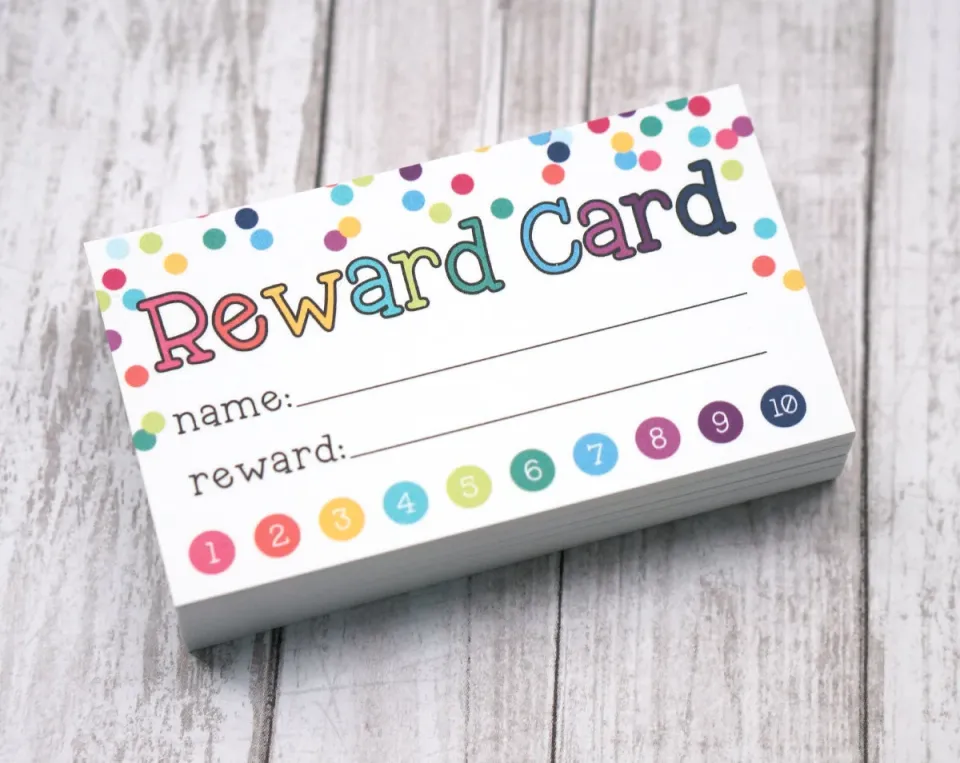Day 2/5: Mistakes That Kill Your Points Value (Or: How to Avoid Them)
Imagine losing thousands of dollars in hidden fees, low-value redemptions, and “expiring” points you never used. Avoid the 7 fatal flaws draining your travel stash and learn the pro strategies insiders use to score dream trips - first class, luxury resorts, and epic adventures - on the cheap.

Deep Research Using AI
This epic, nearly 20,000-word beast of an article series was painstakingly conjured up with some Deep Research functionalities. While it may sound incredibly authoritative, well-informed, and even suspiciously insightful, remember—this content is intended for entertainment purposes only. Think of it as the informational equivalent of a late-night Wikipedia rabbit hole: fun, fascinating, occasionally eyebrow-raising, but definitely not something you should bet your house, job, or firstborn on.

If You Only Had 60 Seconds to Read This Article (Click Here)
Award travel success boils down to not just earning points but deploying them with patience and purpose. Rushing to redeem as soon as you hit your target can mean settling for mediocre awards—think short domestic flights or cheap hotel nights—instead of holding out for high-value, aspirational redemptions like business-class international tickets or luxury resorts. Before you spend, set a clear redemption goal and wait until you can achieve it, ensuring every point you use delivers maximum bang for your buck.
Equally damaging is burning points on merchandise or gift cards, where redemption rates often fall below half a cent per point. Those household gadgets and retailer vouchers might feel like freebies, but they pale in value next to travel awards booked via partner transfers. Always calculate your cents-per-point before redeeming, and resist the easy lure of “Pay with Points” options that undercut your rewards’ worth. Meanwhile, don’t let your balances lapse—most programs only require minimal activity, like a small transfer or purchase, to reset expiration clocks. Keep an eye on expiry dates so no earned mile slips through your fingers.
Another overlooked source of value erosion lies in fees and missed bonus opportunities. Carrying a balance on a rewards card is a surefire way to see interest charges swallow any reward benefit, so pay in full every month. Swap out cards that charge foreign transaction or hefty award surcharges for no-fee alternatives when you travel, and make sure annual fees are justified by perks you actually use. At the same time, hunt down transfer-bonus promotions—limited-time offers that can boost your airline or hotel currency by 10–40%—by subscribing to issuer alerts and points-and-miles news outlets.
Finally, treat your points like investments rather than pocket change. Overlooking bonus spending categories (the 3× dining or 5× travel multipliers) or using the wrong card for everyday purchases means leaving free points on the table. Keep your wallet strategy current—activate rotating categories, match spending to the best-earning card, and watch for targeted offers. Above all, map out your travel aspirations in advance, choose the right programs, and ask yourself before every redemption: “Does this move align with my plan?” With this strategic mindset, you’ll protect the full value of your points and unlock the standout travel experiences they’re meant to fund.
Everything else you need to know is just below 👇🏻
Introduction
In the world of award travel, earning points and miles is only half the battle – using them wisely is what unlocks their full value. Yet many travelers unknowingly make mistakes that drastically undermine the worth of their hard-earned rewards. Common pitfalls such as poor timing, suboptimal redemptions, or simply not having a plan can mean the difference between turning points into tens of thousands of dollars in travel versus only a few hundred. To maximize point value, it’s crucial to avoid these errors. This article outlines the most prevalent mistakes that kill your points value and provides advanced strategies (with Pro Tips!) to help intermediate and experienced award travelers squeeze the absolute most out of every point.
Redeeming Too Early: Patience Pays Off
One frequent mistake is rushing to redeem points as soon as they’re earned. It’s understandable – you’re excited to use those rewards or worried they might expire. However, premature redemption often means settling for low-value uses or missing out on bigger opportunities later. Savvy points enthusiasts know that patience pays off: holding your points until you can achieve a high-value redemption is usually wiser than cashing out for a quick, mediocre reward. For example, rather than immediately spending points on a short domestic flight or a cheap hotel night, you might wait and combine them with future earnings for a first-class international ticket or a luxury resort stay. The value difference can be dramatic. Points generally don’t lose value overnight, and most programs make it easy to keep them alive with minimal activity. As travel experts note, you don’t need to rush to burn your points out of fear of expiration – simply earning or redeeming a single mile in an account can reset the clock and preserve your stash. By exercising a bit of patience and planning, you ensure that when you do redeem, it’s for something truly worthwhile.
Using Points on Low-Value Items and Gift Cards
Another major value-killer is redeeming points for low-value items, such as merchandise or gift cards. It may feel satisfying to get a “free” toaster or a $50 gift card using points, but in almost all cases this is a terrible deal. These redemptions typically yield a very poor cents-per-point value. For instance, many credit card programs let you redeem points for shopping or gift cards at a rate of about 0.5 to 1 cent per point – far less than the value you could get from travel. According to award travel experts, using premium credit card points for cash back or retail gifts is a common mistake since these are usually “low-value redemptions.” In contrast, transferring those points to airline or hotel partners for travel can be one of the best, high-value ways to use rewards.
Some of the lowest-value redemption options to avoid include:
- Merchandise catalog: Cashing in points for electronics, appliances, or other catalog merchandise often gives you less than 1 cent of value per point. The points required usually outweigh the item’s actual cash price, meaning you overpay in points for what you get.
- Gift cards or statement credits: Travel reward cards tend to offer excellent value when used for travel, but if you redeem those same points for gift cards or a cash statement credit, the value can plummet. You’re essentially forfeiting the bonus travel value and settling for a basic, lower rate.
- “Pay with Points” at checkout: Options like using points on Amazon or other retailers to pay for purchases generally come with poor conversion rates (sometimes around 0.8 cents per point). It’s an easy redemption, but it devalues your rewards compared to other uses.
Vitamix blender priced at 98,600 points. Redeeming such a massive stash of points for an appliance yields a shockingly low value, effectively trading away a high-value travel reward for a household item. This example illustrates why using points for merchandise or gift cards is often considered a poor redemption choice.
On the other hand, the high-value redemptions are typically those “aspirational” travel rewards that give outsized value for your points. By transferring credit card points to airline or hotel partners, you can often book premium cabin flights or luxury hotel stays that would cost thousands of dollars if paid in cash. Even economy flights and regular hotel nights usually stretch your points further through loyalty programs than through gift card redemptions. In fact, banks’ own travel portals usually fix point value at around 1 to 1.25 cents per point, whereas using airline miles or hotel points directly can sometimes double or triple that value. Always compare how many points a trip would cost versus its cash price – you’ll often find the transfer partner route lets you spend fewer points for the same or better reward.
A luxurious Lufthansa first class seat that can be booked using points for an unforgettable experience. High-end flight and hotel redemptions like this often provide outsized value for your points, far exceeding the value of trivial redemptions. Instead of burning 100,000 points on a blender or a gift card, that same amount might let you fly in first class or enjoy a week at a five-star resort – a perfect example of patience and strategic point use unlocking extraordinary travel.
Ignoring Points Expiration
All the points in the world won’t do you any good if they expire before you use them. Many loyalty programs have expiration policies that cause your points or miles to vanish after a period of inactivity – often 18 to 36 months with no new earn or burn activity. A classic mistake is ignoring these policies and letting large balances lapse. Imagine painstakingly accumulating 50,000 miles, only to log in and find them gone because you hadn’t had any account activity in two years. It’s a heartbreaking way to kill your points’ value.
To avoid this, familiarize yourself with each program’s expiration rules. Some currencies thankfully never expire (for example, Delta SkyMiles, JetBlue TrueBlue points, Southwest Rapid Rewards, and United MileagePlus miles have no expiration). However, others do: American Airlines AAdvantage miles expire after 18 months of no activity (36 months as of recent updates for certain accounts), and many hotel points also expire after 12-24 months of inactivity. The good news is that “inactivity” is usually easy to fix. Most programs consider your points alive as long as there’s any qualifying activity in the account within the expiration window. In practice, that could mean earning or redeeming just one point or mile to reset the clock. For instance, making a small purchase through an airline’s shopping portal, transferring a few points from a partner, or even donating a handful of miles to charity can all count as activity. It often takes only minutes of effort to keep an account active. As one travel writer put it, there’s really no reason your points “should expire” these days – a tiny amount of activity every year or so will protect them.
Staying on top of this does require some organization. Keep a schedule or use tools (like award program tracking apps) to regularly review your loyalty accounts for any points nearing expiration. Many frequent travelers set calendar reminders for each program or do a periodic sweep (say, every quarter) to ensure no account is going dormant. By proactively managing this, you’ll never be caught off guard by an expiration. Remember, letting points lapse is literally throwing away value that you earned – it’s 100% avoidable with a bit of attention.
Missing Transfer Bonuses
One of the most powerful ways to amplify your points’ value is by exploiting transfer bonuses – limited-time promotions where banks give you extra miles or points when you transfer to airline or hotel partners. For example, a card issuer might offer a 30% bonus when converting your credit card points into a certain frequent flyer program. If you normally get 1 airline mile per point transferred, during the promo you’d get 1.3 miles per point. These bonuses effectively let you book awards for fewer points than usual, boosting the value of your currency by 10%, 30%, even 40% overnight. It’s no surprise that seasoned travelers wait for transfer bonus windows to make big moves with their points.
The mistake, however, is missing these promotions entirely. Transfer bonuses are not constant; they pop up unpredictably and usually last only a few weeks. If you’re not paying attention, you might transfer 50,000 points to an airline today and then learn that if you had waited until next month, you could have gotten 65,000 miles for the same transfer thanks to a bonus. “Don’t miss out on the chance to maximize your points with transfer bonuses,” advises The Points Guy, noting how past offers like 25% extra when moving Chase points to Air France/KLM or Citi points to Avianca have delivered huge value. In practical terms, a 25% bonus means that instead of, say, 50k points yielding a 50k mile award ticket, you’d get 62.5k miles – potentially the difference between flying economy versus business class for the same out-of-pocket cost.
Staying on top of these opportunities is key. Because they’re hard to predict and easy to overlook, savvy points collectors use a variety of methods to get alerts. Often, the loyalty programs and banks will send emails about transfer bonuses (if you’re subscribed to their newsletters). There are also independent blogs and websites that maintain up-to-date lists of current transfer bonuses. Checking resources like these regularly, or setting Google Alerts for terms like “points transfer bonus,” can ensure you hear about deals while they’re active. As one guide notes, these limited-time offers “can be easy to miss,” so it pays to actively watch for them. If you know you’ll want to transfer points for a particular trip, try to time it to coincide with a bonus promotion for maximum effect.
Paying Fees That Neutralize Point Gains
Earning points often comes with some costs – but be careful that fees and charges don’t wipe out the value of your rewards. One common mistake is failing to account for credit card interest and fees, which can easily neutralize (or outweigh) the benefits of points earned. For instance, carrying a balance on a rewards credit card is a big no-no. The high interest rates on these cards (often 15-25% APR) will “wipe out any potential benefit” you get from points. Even the most valuable points currency is rarely worth more than a couple of cents per point, which absolutely pales in comparison to paying double-digit percentage interest on debt. As experts bluntly put it, your points are “not likely to be worth anywhere near the interest rate you’ll be paying on balances that you carry”. In short, never carry a credit card balance in pursuit of points – the interest charges will kill your point value. Pay off your card in full each month so those points truly come “free.” If you can’t, you’re better off using a low- or no-interest card until you can, rather than a high-interest rewards card.
Another fee that quietly eats into reward value is the foreign transaction fee. Many general credit cards charge about a 3% fee on purchases made in a foreign currency. Three percent might not sound like much, but consider that 3% on a $5,000 Europe trip is $150 in extra fees. If your card only earns 1x point per dollar on those purchases (maybe 5,000 points worth perhaps $50), you’ve essentially paid $150 to get $50 of value – a net loss of $100. Using a card with no foreign transaction fees when traveling abroad is essential; otherwise, you’re giving back more in fees than you gain in rewards. The same logic applies to other fees like booking fees or fuel surcharges on award tickets. Sometimes an airline will levy hefty surcharges (hundreds of dollars) on an “award” flight. If you’re not careful, you could pay more in taxes and fees for an award ticket than you would for a revenue ticket on a different airline. Always factor in those fees when evaluating an award redemption – $500 in fees for a so-called free flight is probably not a good use of miles unless that flight was exorbitantly expensive in cash.
Annual fees on rewards credit cards are another area to watch. Many top travel cards carry annual fees of $95, $550, or more, which are absolutely worth paying if you utilize the card’s perks and rewards to the fullest. However, a mistake is holding a high-fee card without actually using the benefits. For example, if you’re paying $550 per year for a premium card because it offers lounge access, hotel elite status, and travel credits, but you didn’t actually visit any lounges or use the credits that year, then that $550 is money down the drain. The card’s glossy perks only have value if you take advantage of them. Before each annual fee hits, do a frank assessment: Are the rewards and benefits I’m getting worth the cost? If not, consider downgrading or canceling that card to save money (or switch to a no-annual-fee alternative). There are plenty of great no-fee or low-fee cards that still earn rewards; overpaying for unused perks is a textbook case of a fee neutralizing your points gains.
To maximize net value, think of your points in context with any fees incurred to earn or use them. That means: avoid interest at all costs, sidestep foreign transaction fees by using the right cards, seek out low-surcharge award options, and ensure annual fees are justified by your usage. The goal is to keep the “cost” side of the equation as low as possible so that the value of your points remains pure profit.
Not Maximizing Bonus Categories
Many reward credit cards entice customers with bonus categories – higher earning rates on specific types of purchases (like 3x points on dining, 5x on airfare, 2x on groceries, etc.). These are golden opportunities to supercharge your points earning, yet a surprising number of people don’t take full advantage. Failing to maximize bonus categories is a mistake that effectively leaves free points on the table. If you’re spending in a bonus category but not using the card that earns extra for that category, you’re earning at a baseline rate (often 1 point per dollar) when you could be earning multiples more. Over a year, this can add up to thousands of points forgone simply due to not using the optimal card for each purchase.
Common oversights include: using the wrong card out of habit (e.g., using a 1x cashback card for dining when you have a card that would earn 4x points at restaurants), forgetting to activate quarterly rotating categories, or not keeping track of which card is best for which spending. For example, Chase Freedom Flex and Discover it cards offer 5% back in categories that rotate each quarter – but you must activate those bonuses and then remember to use the card for those purchases. If you neglect that, you default to 1% earning, and the opportunity is lost. Another example: say you have a travel card that gives 3x on travel and a different card that gives 2x on groceries; if you accidentally use the travel card for groceries and the grocery card for travel, you’ve missed out on the bonus in both cases. It sounds obvious, but keeping your strategy straight can get tricky when you have multiple cards.
The solution is to develop a strategic “wallet plan” and regularly update it. Take stock of each card’s bonus categories (some are fixed, like always 3x on travel; others rotate or have quarterly activations). Then match your spending patterns to the right card. You want to be earning multiple points per dollar on nearly every purchase if possible. A helpful practice is to organize your cards in your wallet by use case – for instance, attach a little label or use a phone wallet app that reminds you “Gas = Card A, Dining = Card B,” etc. Additionally, set calendar alerts for the first of each quarter to activate any rotating category bonuses and see what categories are upcoming, so you can plan larger purchases in those areas during the bonus period. If a category is particularly rewarding (like 5x on online shopping during Q4, for example), you might even shift the timing of some purchases to coincide. Advanced users also keep an eye on temporary bonus offers: banks sometimes introduce limited-time category bonuses or targeted offers (like “earn 10x on XYZ retailer for the next 2 months”). Don’t ignore those communications from your card issuers – they could contain opportunities to snag extra points.
By being diligent about category bonuses, you effectively give yourself a big raise in point earnings without spending more money. The difference is stark: imagine $10,000 of annual spend on a card at 1x = 10,000 points. But if most of that spend was in 3x–5x categories that you leveraged, you might earn 30,000–50,000 points on the same $10,000 spend. That’s a huge boost, translating to more free flights and nights. As one rewards expert put it, not maximizing these bonuses is “basically leaving points, and thus huge potential value, on the table.”
Lack of Strategic Planning for Redemption
Perhaps the overarching mistake that encompasses many of the above is simply not having a strategy for how and when to redeem your points. It’s easy to accumulate points haphazardly – a signup bonus here, some miles there – and then spend them impulsively because they’re “free.” But without a clear redemption plan, you risk diluting their value or missing out on the real dream redemptions. Strategic planning means aligning your points usage with your travel goals and financial context. It’s essentially the art of being intentional: you earned these points deliberately, now redeemthem deliberately.
One aspect of planning is ensuring you’re earning the right kind of points for your goals. If you know you want to take your family to Hawaii in two years, for example, you might plan to focus on accumulating miles with an airline that flies there or transferable points that can be used with multiple carriers. What you want to avoid is ending up with a bunch of points spread across programs that individually aren’t enough for any great redemption, or points in a program that doesn’t serve your needs. As travel guru Nomadic Matt advises, think about the trip you want – where you want to go and how – and then earn (and later redeem) in the programs that help get you there. If you just want flexibility because you’re not sure what your goal is yet, lean toward transferable bank points (Chase Ultimate Rewards, Amex Membership Rewards, Citi ThankYou, etc.), which give you a variety of options when it comes time to redeem. Flexible points are like keeping your options open – they allow you to decide later which airline or hotel to transfer to based on what reward you want at that time. That way, you don’t lock yourself into one program prematurely.
Having a redemption plan also means timing and execution strategies. This can include things like: knowing the best times to book awards (some plans require booking almost a year out for peak experiences, as early availability can be great, while other opportunities pop up last-minute), avoiding transferring points to a partner until you’re ready to book (to prevent devaluations or being stuck with unused miles in one program), and having backup options if your first choice redemption isn’t available. For instance, if your goal is a business class seat to Europe, a strategic planner will research a few different airline programs that could achieve that and know roughly how many points are needed for each, improving the odds of success. They’ll also keep an eye on award space and perhaps plan to book during off-peak times if possible for lower award rates.
Impulsive redemptions are the enemy of value. This could mean redeeming points just because you have them, with no larger goal – like blowing 20,000 valuable transferable points for a $100 home appliance (when those points could have been a one-way first-class ticket worth 10 times as much). It could also mean transferring all your flexible points to a specific airline on a whim because you might use it, and then plans change and you wouldn’t have chosen that airline after all. Without a strategy, it’s easy to make these spur-of-the-moment choices that are later regretted. A little foresight goes a long way. Even something as simple as mapping out your anticipated travel for the next year and deciding where you want to use points vs. pay cash can help clarify how to deploy your points for maximum effect.
Strategic planning also involves safeguarding your points’ value during any major changes. For example, if you plan to downgrade a credit card (maybe to avoid a fee), make sure you understand what will happen to the points in that account. In some cases, if you haven’t used or moved them, you could lose transfer privileges or see their value slashed. One real-world example: if you downgrade a Chase Sapphire Preferred card to a no-fee Freedom card, your Chase points suddenly lose the ability to transfer to airline/hotel partners and become worth a flat 1 cent each for redemption. Failing to plan for that could cut your points’ value in half or more. The strategic move would be to transfer those points to a partner before downgrading, or combine them into another premium card account you have, so you don’t forfeit value.
In summary, treat your points with the same intentionality as you would money in an investment account. You wouldn’t randomly cash out an investment account for a mediocre return if you had a plan for a bigger payoff – likewise, don’t redeem points willy-nilly without considering if there’s a more valuable use on the horizon. By setting clear objectives, aligning your earning and burning to those objectives, and timing your redemptions wisely, you ensure that every point spent is working toward something meaningful.
Final Thoughts: Unlock Dream Travel without Wasting a Single Mile
By avoiding these seven mistakes and following the accompanying tips, you’ll ensure that your points and miles generate the highest possible value toward your travel adventures. Every reward program and credit card is a tool – used correctly, they can unlock experiences far beyond their nominal cost. Stay patient, be strategic, and never stop learning new ways to outsmart the system. Do this, and you’ll find your points taking you further and in more style than you ever imagined, all without wasting an ounce of their value.
Happy earning and see you in Day 3 of our series, where we’ll continue to build on this foundation for even more award travel success!




